Dyrhólaey
By Michael Chapman
Discover its birdlife, lighthouse and dramatic rock arch
Dyrhólaey
By Michael Chapman
Discover its birdlife, lighthouse and dramatic rock arch
Dyrhólaey is a scenic promenade that marks Iceland’s southernmost point. In former years, English seamen referred to Dyrhólaey as Cape Portland, celebrating its appearance as the final sign their voyage had come to an end.
Dyrhólaey reaches a total elevation of 120 metres, making for staggering panoramas over neighbouring Reynisfjara black sand beach. Thanks to its close proximity to Iceland’s Ring Road, most visitors will stop at Dyrhólaey in between this famous stretch of shoreline and the village of Vík í Mýrdal.
From Iceland’s capital, Reykjavík, Dyrhólaey is 174 kilometres away, which equates to a two-and-a-half-hour drive. This distance should not be in the slightest off-putting; the route is dotted with spectacular sights and points and interest from beginning to end.
Dyrhólaey itself boasts incredible views over the South Coast’s black sand shorelines, with clear days providing a full scope of the mountains and sea-cliffs that run parallel to Route 01. Looking north, visitors can witness the creeping ice of Mýrdalsjökull glacier, while to the east, the black totem stacks of Reynisdrangar point skyward like devilish fingers.
Dyrhólaey Rock Arch
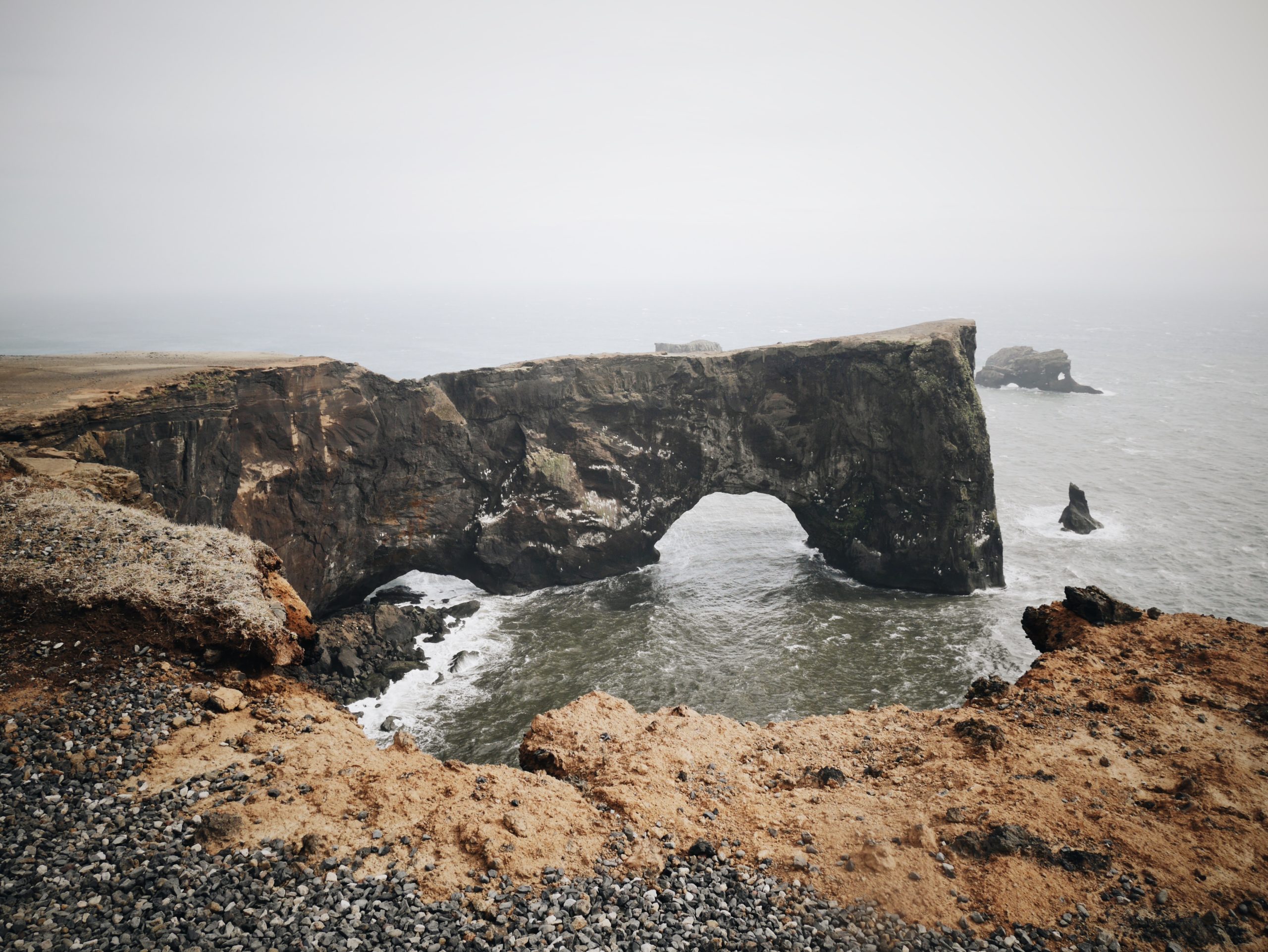
Upon arriving at Dyrhólaey, guests will instantly witness the enormous, naturally-formed rock arch that sits directly below the promontory. This 100-metre wide geological spectacle gave Dyrhólaey its name, Door Hill Island, which also hints at the cape’s past as a cut-off from the mainland.
Surrounded by soaring seabirds, its basalt legs hammered by the frothing white waves of the Atlantic Ocean, one must take a moment to breathe in this spectacular feature for all its worth. With salt circling the nostrils and wind in your hair, you’ll appreciate just how stunning it is, what elemental erosion can do to rock over thousands of years.
Dyrhólaey’s rock arch bores such a gaping hole that smaller vessels have no issue sailing beneath through it. In fact, a thrill-seeking pilot managed to fly both himself and a passenger through the rock arch using a small aircraft way back in 1993, only demonstrating the epic nature of this feature.
PLAN YOUR JOURNEY
Travelling to Iceland?
Check our overnight tours with a driver guide that includes a one night stay in a bubble.
*Starting from ISK 59.900 per person
Dyrhólaey Lighthouse
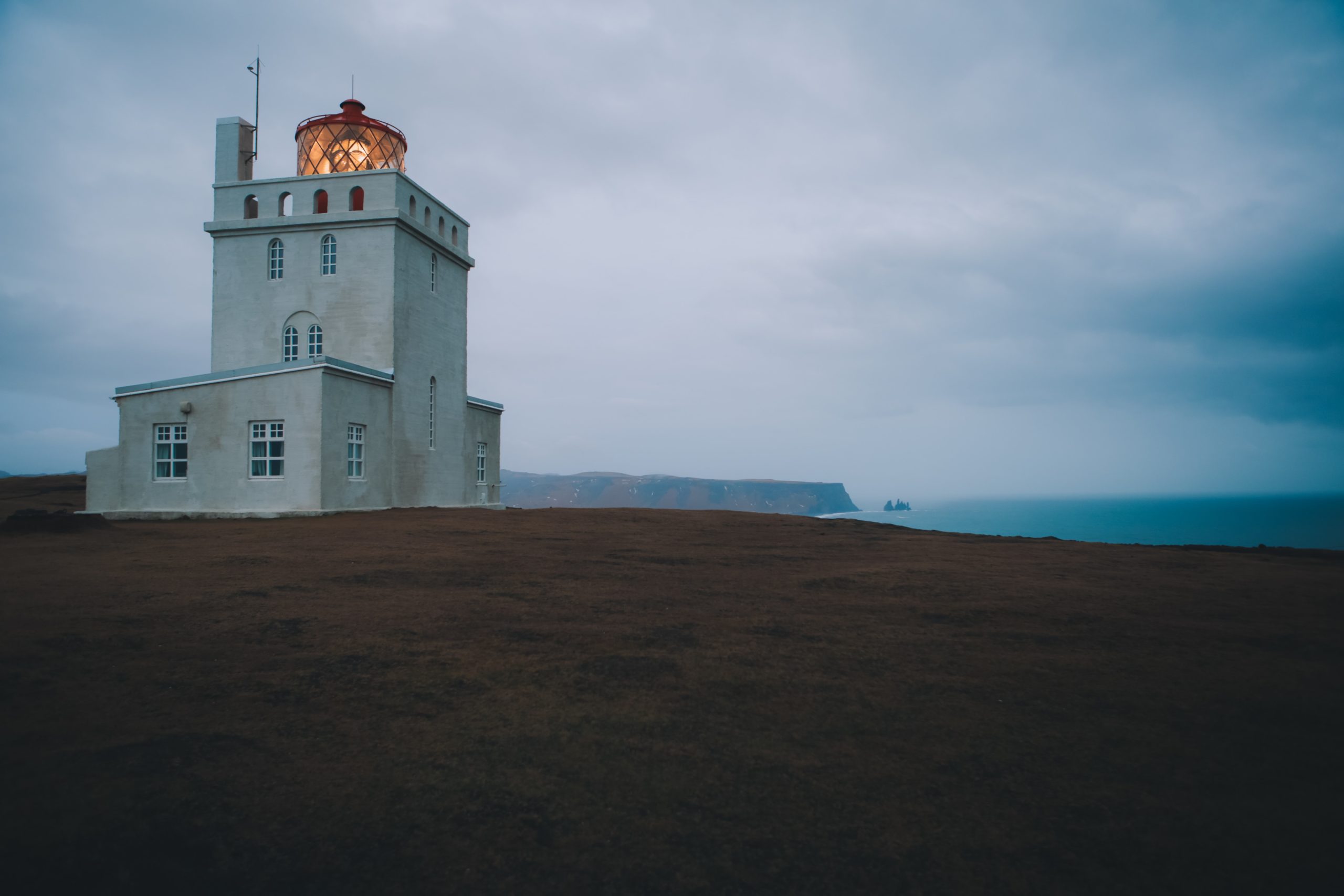
The cape is also known for its picturesque lighthouse. Dyrhólaeyjarviti, as it’s known in the mother tongue, is the second lighthouse built on-site, serving as a replacement to the steel edifice first constructed here in 1910.
Seemingly inspired by ancient Mediterranean forts, the lighthouse seamlessly integrates with the landscape around it, making for a great photography subject with its white paint-job and scarlet roofing. Many compare the structure to a castle with its open embrasures, though it only reaches a total height of 13 metres.
The lighthouse was designed by the Icelandic State Architect, Guðjón Samúelsson, who was also responsible for some of the Capital’s most iconic buildings; Hallgrimskirkja Lutheran Church, Sundhöll Reykjavík swimming pool, and the National Theatre, being just a handful.
See Atlantic Puffins at Dyrhólaey
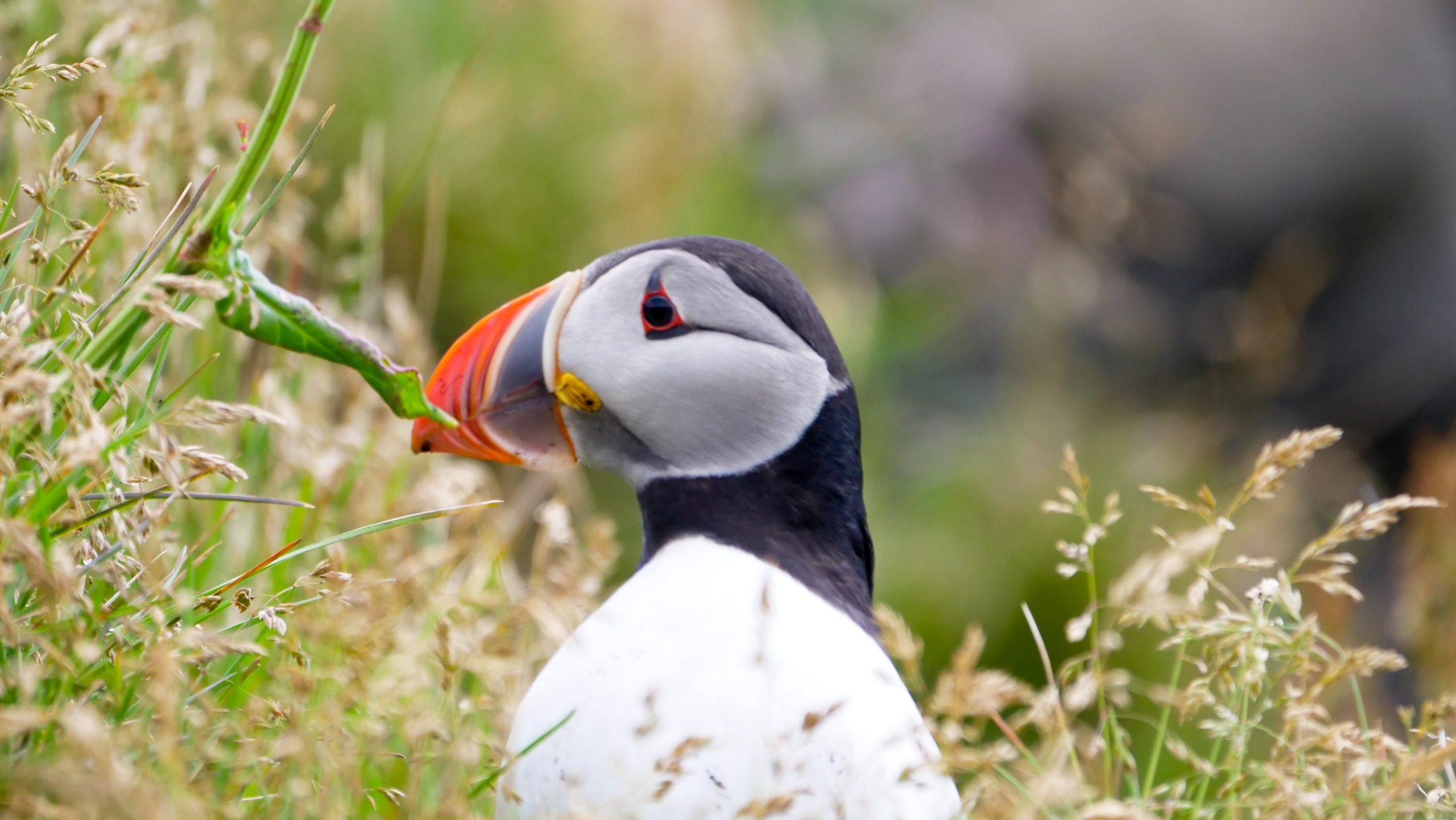
Atlantic Puffins are migratory species, meaning they will only arrive in Iceland from around April-May. Their winters are spent alone, far out at sea, bobbing on the waves and pecking at the odd fish that shimmies by. Guests on whale watching tours out-of-season will often see these tiny birds floating alone, in between glimpses of this island’s larger marine wildlife.
When they return to land, they do so to nest and breed. The baby Puffins born here (known officially, and adorably, as Pufflings) will grow up to be part of the 8-10 million that routinely travel back and forth to this island.
Atlantic Puffins are monogamous animals and so will have one partner throughout their lives. This fact boggles the mind somewhat considering how these birds can find one another, year after year, despite the distances travelled and the sheer number of waddling lookalikes around them.
Dyrhólaey is just one place in Iceland that the Puffins like to summer, with other favoured spots being the tall cliff sides of Latrabjarg, in the Westfjords, and Heimaey, the largest of the Westman Islands.
Other birds commonly spotted at Dyrhólaey promenade include Eider Ducks, Arctic Terns and Skuas. Dedicated twitchers will want to bring their own binoculars for the best views of the birds in their natural habitat.
Speaking of Puffin watching, it should be noted that access to Dyrhólaey during the nesting season (May-September) is limited due to the risk of nest abandonment and environmental damage. However, guests are free to use the specified walkways between the hours of 7PM and 9 AM, as overnight visitors are considered less disruptive overall.
Safety tips for visiting Dyrhólaey

Iceland. However, there are a few other considerations to account for before cementing this as a surefire stop on your schedule.
Families with small children might want to consider that the cliff sides at Dyrhólaey have no safety boundaries, meaning it is, theoretically, possible to walk right up to the edges. If you are planning to visit with kids, it is essential that you warn them of the dangers of getting to close and keep watchful of them throughout your stay.
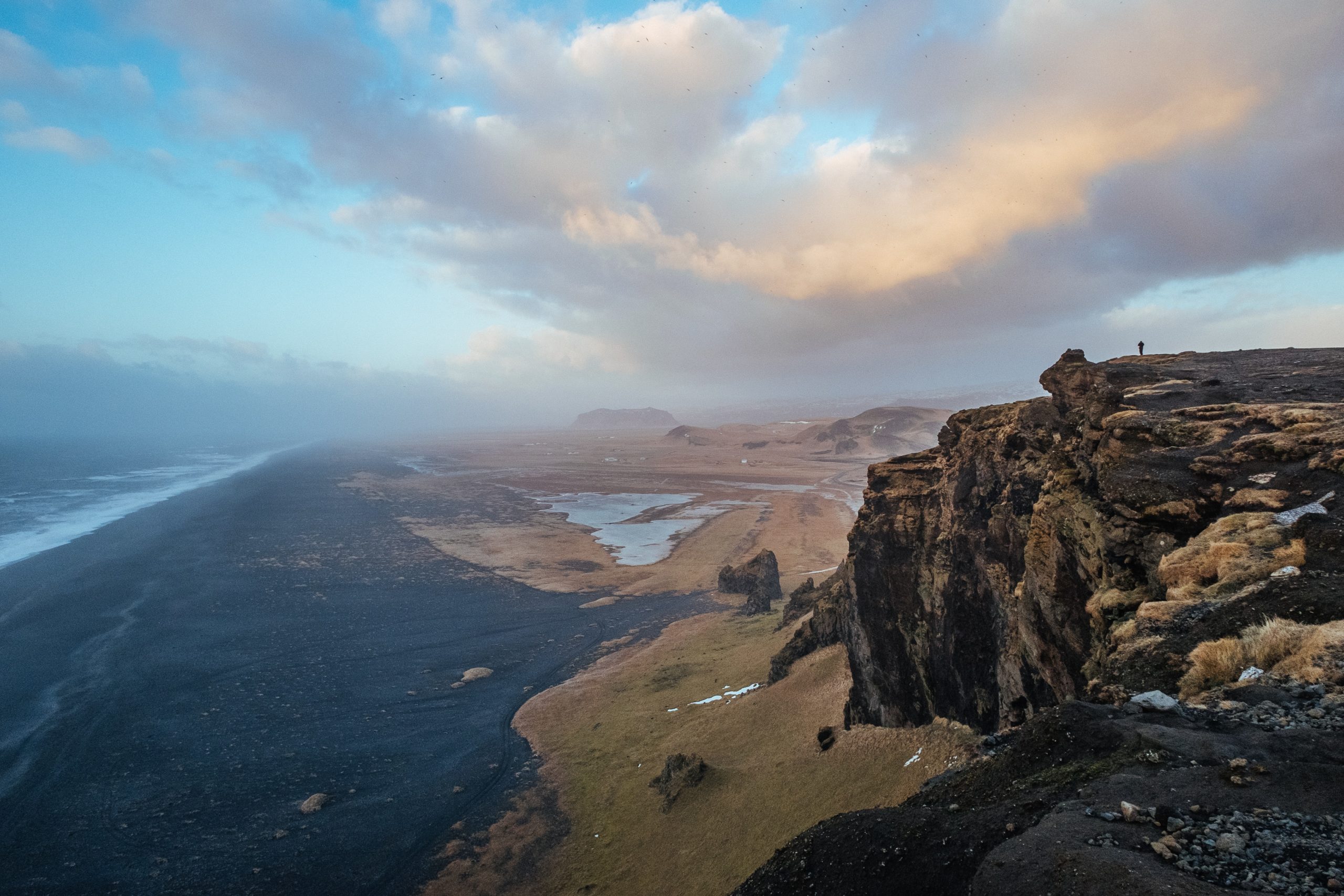
Another safety tip to keep in mind is that Dyrhólaey is totally exposed to the sea, meaning it bears the brunt of strong winds almost constantly. Driving up the steep and winding gravel road towards the lighthouse can be unnerving on windy days, so a 4×4 vehicle is always recommended. Even if that’s the case, easily-frightened visitors might consider skipping this in favour of interests further inland.
A quick glance over TripAdvisor will quickly inform you most people consider conditions at Dyrhólaey to be bracing. For that reason, you will want to make sure you are dressed appropriately in a wind and waterproof jacket, sturdy hiking boots, thick thermal layers and the other usual accessories (eg. hats, gloves and scarf).
Explore Dyrhólaey on Iceland's South Coast
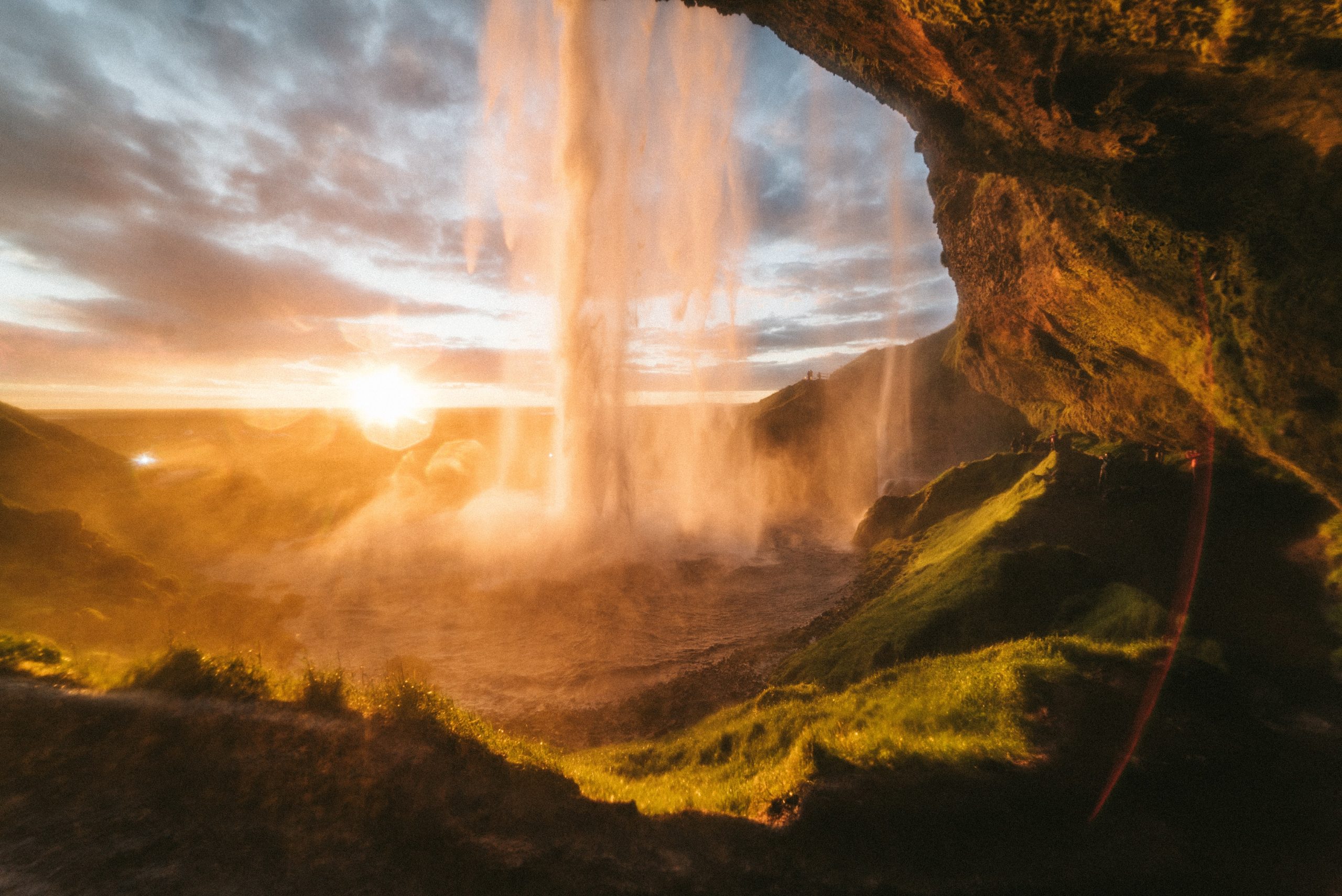
Of course, Dyrhólaey is just one of the many natural attractions located on the South Coast. Others that have become popular among visitors over recent years include the two stunning waterfalls, Seljalandsfoss and Skogafoss, and the widely-photographed DC-Solheimasandur plane wreck.
If you are interested in exploring this majestic region, make sure to book a South Coast Bubble tour with us. Not only will you bag yourself a guided trip that includes stops at all the major sites, but also an overnight stay in one of our cosy and transparent bubbles.
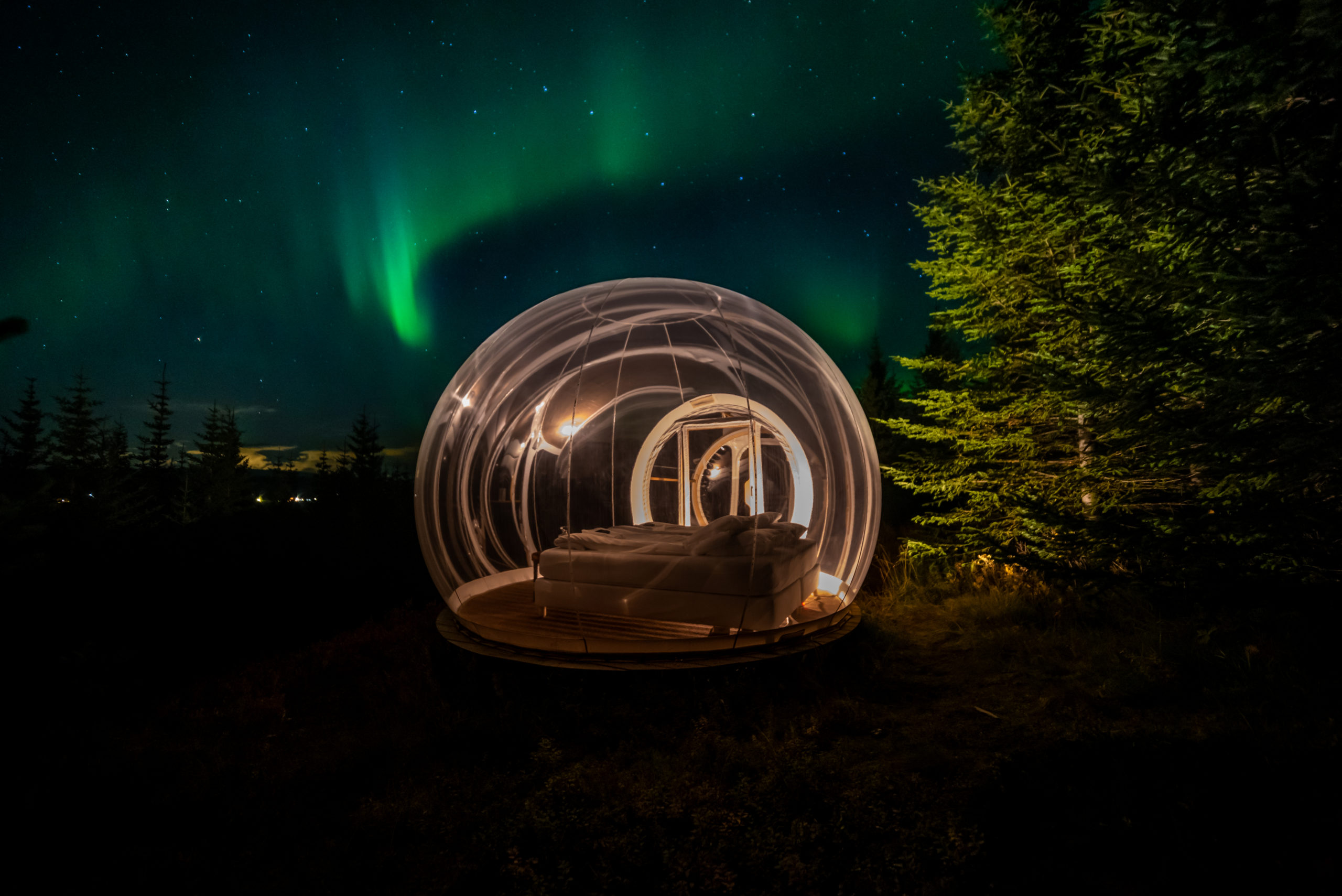
Such a novel accommodation choice is fantastic for a multitude of reasons. Throughout the winter night, you will be able to watch out for the elusive Northern Lights overhead, all while tucked up comfortably in bed. If the auroras are nowhere to be found, you’ll still have a blanket of starlight to send you soundly off to sleep.
On the other hand, summer guests will experience what it’s like to stay overnight in a luscious woodland bathed beneath the Midnight Sun. Nothing describes the inner peace and connectedness with nature that one feels the morning after such an experience.
PLAN YOUR JOURNEY
Travelling to Iceland?
Check our overnight tours with a driver guide that includes a one night stay in a bubble.
*Starting from ISK 59.900 per person


